Versione italiana English version Version française Versión en español
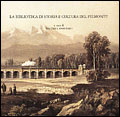 The starting volume of the collection presents the bibliographical and archival collections owned by the library, supplemented by a history of the institution, the biographical profiles of the characters linked to the collections and by insights into individual peculiarities. Founded in 1956 by the will of the President of the Province - now Metropolitan City - Giuseppe Grosso (to which today it is dedicated), thanks to the impulse of Luigi Firpo, the library has over the years been a sure point of reference for scholars, students and university professors. This start-up volume aims to open the doors of the library to all, to make its structure and history clear.
The starting volume of the collection presents the bibliographical and archival collections owned by the library, supplemented by a history of the institution, the biographical profiles of the characters linked to the collections and by insights into individual peculiarities. Founded in 1956 by the will of the President of the Province - now Metropolitan City - Giuseppe Grosso (to which today it is dedicated), thanks to the impulse of Luigi Firpo, the library has over the years been a sure point of reference for scholars, students and university professors. This start-up volume aims to open the doors of the library to all, to make its structure and history clear.
Summary: Premessa (Monica Cuffia), p. 11; Introduzione (Walter Canavesio), p. 13; La biblioteca dell'Amministrazione Provinciale e la formazione della biblioteca "Storica", p. 17; Il settore Piemontesi p. 45; Il Fondo bibliografico del senatore Giorgio Ermanno Anselmi, p. 61; Giorgio Ermanno Anselmi, p. 65: La biblioteca di Marino Parenti, p. 67; Marino Parenti, p. 79; La biblioteca della famiglia Giulio-Falconieri, p. 83; Carlo Ignazio Giulio, p. 89; I Fondi Terenzio Grandi e Umberto Griffini, p. 93; Terenzio Grandi, p. 96; La biblioteca di Augusta e Guglielmo Lange, p. 99; Augusta e Guglielmo Lange, p. 104: I periodici, p. 107; Spartiti musicali, carte geografiche e stampe, archivio teatrale, manoscritti, p. 113; La sezione archivistica, p. 121; Legature di pregio nella "Biblioteca di Storia e Cultura del Piemonte" (Francesco Malaguzzi), p. 131; L'organizzazione del catalogo e del soggettario. Sistemi di ordinamento e classificazione. Il sistema SBN nella biblioteca storica (Luigi Margaria, Mario Rolle), p. 151.
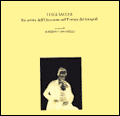 The volume contains, around the catalogue of the exhibition organized by the Library in May 1998, a series of essays on the figure of Luigi Sacchi, pioneer of calotypic photography in Italy as well as impresario of the first illustrated edition of the Promessi Sposi. The collection of Sacchi's calotypes, owned by the library, has been specially restored and made available to readers. The volume retraces the events of the spread of calotypy in Italy, reconstructs the Milanese photographic environment of Sacchi's time, and analyzes the network of relationships that united the owner of the collection, Marino Parenti, with Italian art critics and collectors in the 1930s-1950s.
The volume contains, around the catalogue of the exhibition organized by the Library in May 1998, a series of essays on the figure of Luigi Sacchi, pioneer of calotypic photography in Italy as well as impresario of the first illustrated edition of the Promessi Sposi. The collection of Sacchi's calotypes, owned by the library, has been specially restored and made available to readers. The volume retraces the events of the spread of calotypy in Italy, reconstructs the Milanese photographic environment of Sacchi's time, and analyzes the network of relationships that united the owner of the collection, Marino Parenti, with Italian art critics and collectors in the 1930s-1950s.
Summary: Presentazione (Valter Giuliano, p. 7); Premessa (Roberto Cassanelli), p. 9; Luigi Sacchi fotografo 1805-1961 (Roberto Cassanelli), p. 11; Le origini della fotografia a Milano e il problema del ritratto (Silvia Paoli), p. 51; Giuseppe Mongeri interprete della prima attività di Luigi Sacchi (Lucia Pini), p. 57; Marino Parenti e la raccolta Sacchi (Walter Canavesio), p. 73; Catalogo delle opere, p. 87; Schede delle opere (Roberto Cassanelli), p. 147; Il "modus operandi" di Luigi Sacchi (Sandra Maria Petrillo), p. 161; Nota sul fondo fotografico di Archimede Sacchi (Walter Canavesio), p. 181.
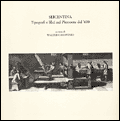 In all the studies on the history of the book in Piedmont, the Seventeenth Century was set aside for years, in the prejudice of a poor quality of the works that also weighed on the real reconstructions of the life of the printers. This research has attempted, for the first time, a reversal of perspective, analyzing the events of the Piedmontese printing works of the seventeenth century in a dual perspective, bibliological and historical. The result is a complex fresco, which the geographical approach, by regional areas, has reconstructed on first-hand data. The work is completed by the catalogue of the six Piedmontese cents owned by the library.
In all the studies on the history of the book in Piedmont, the Seventeenth Century was set aside for years, in the prejudice of a poor quality of the works that also weighed on the real reconstructions of the life of the printers. This research has attempted, for the first time, a reversal of perspective, analyzing the events of the Piedmontese printing works of the seventeenth century in a dual perspective, bibliological and historical. The result is a complex fresco, which the geographical approach, by regional areas, has reconstructed on first-hand data. The work is completed by the catalogue of the six Piedmontese cents owned by the library.
Summary: Presentazione (Valter Giuliano), p. 5; Introduzione (Walter Canavesio), p. 9; Libro, lettori e società nel Piemonte del '600 (Giancarlo Chiarle), p. 19; Librai e stampatori a Torino alla metà del Seicento (Andrea Merlotti), p. 69; Stampatori e librai ad Asti nel XVII secolo (Blythe Alice Raviola), p. 99; Stampatori e librai a Cuneo nel Seicento: dal commercio delle strazze al mercato librario (Paola Bianchi), p. 161; Stampatori e librai vercellesi nel XVII secolo (Caterina Testa), p. 193); Nascita della Seicentina. Il caso Tarino (Walter Canavesio), p. 221; Legature per il secondo principe di Carignano (Francesco Malaguzzi), p. 245; Le Seicentine piemontesi della Biblioteca di Storia e Cultura del Piemonte (Walter Canavesio), p. 257.
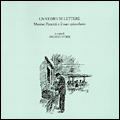 The discovery of the important correspondence of the bibliographer, bibliophile and collector Marino Parenti, has led to an in-depth study of his figure, which touches on significant aspects of literature, publishing and bibliophilia of the twentieth century. Around Parenti there are, in fact, literary events (from the times of the Literary Fair and the Bagutta Prize up to the 50s), management of power in the cultural field (the Italian Encyclopedia, Giovanni Gentile and the National Centre of Studies Manzoni)and history of publishing, from the first enterprises of the '20s to the precise role of Parenti in the Casa Sansoni from 1947 until the early '60s. The recovery of Parenti's personality is accompanied by the index of the inventory of letters: a practical tool to access his world and the dense network of his friendships.
The discovery of the important correspondence of the bibliographer, bibliophile and collector Marino Parenti, has led to an in-depth study of his figure, which touches on significant aspects of literature, publishing and bibliophilia of the twentieth century. Around Parenti there are, in fact, literary events (from the times of the Literary Fair and the Bagutta Prize up to the 50s), management of power in the cultural field (the Italian Encyclopedia, Giovanni Gentile and the National Centre of Studies Manzoni)and history of publishing, from the first enterprises of the '20s to the precise role of Parenti in the Casa Sansoni from 1947 until the early '60s. The recovery of Parenti's personality is accompanied by the index of the inventory of letters: a practical tool to access his world and the dense network of his friendships.
Summary: Presentazione (Valter Giuliano), p. 5; Introduzione (Angelo d'Orsi), p. 9; Un "uomo dai cento sapori" (Walter Canavesio), p. 15; Ottocento maggiore e minore. Parenti, Manzoni e gli altri (Giuseppe Zaccaria), p. 49; Tra gli scrittori del secolo (Giovanna Ioli), p. 65; Montale: ultima lettera da Genova (Franco Contorbia), p. 93; "Amor di libro". Parenti e la bibliofilia (Stefania Dorigo), p. 115; Lo spirito dell'Ottocento. Un bibliofilo tra gli editori (Filomena Pompa), p. 145; L'antiquario editore. L'attività di Marino Parenti per la casa Sansoni (Ombretta Mellonari), p. 161; Uomini d'arte, oltre che di lettere. Parenti, i critici e gli storici dell'arte (Elisa Erba), p. 183; Sogni d'artisti. Un letterato tra i pittori (sileno Salvagnini), p. 201; Parenti, l'infaticabile: tra musicisti e musicologi (Elisabetta Fava), p. 215; La reinvenzione del testo. Parenti dalla letteratura al cinema (Franco Prono), p. 229; Libri, radio e buonumore. Marino Parenti e "L'Approdo", p. 255; La fotografia corredo visivo di un ottocentista (Walter Canavesio), p. 275; Il militante e il funzionario. Gentile, Parenti e la cultura fascista (Angelo d'Orsi), p. 289; Il Fondo Marino Parenti e l'Epistolario: vicende, ordinamento e descrizione (Francesca Rocci), p. 337; Inventario (a cura di Eloisa d'Orsi), p. 349.
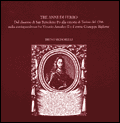 The work intends to open, with a collection of unpublished letters sent by the Duke, then King Vittorio Amedeo II found at the Library in the archive of the Freylino family of Buttigliera, now being settled, a reflection on aspects still ignored of the complex historical and human story of the siege of Turin and the war against the French in 1703-1706. In particular, it is reconstructed in the introductory text, the interweaving of minute stories and military maneuvers that interested the sector of the Turin-Chierese-Astigiana hill before and during the siege. A dense network of characters, often involved in private as well as public interests, found themselves operating in extremely difficult conditions, to try to stem the pressure and infiltration of the enemy army, consciously taking great risks, and not renouncing to proud and ambitious maneuvers, to desperate acts, to less clear agreements and connivances. In the background, there were the peasants, the inhabitants of the places crossed by war, punished by this and by an atavistic backwardness, often closed between the anvil and the hammer of repression, as a commodity of exchange and exploitation by the opposing armies, under the nightmare of the choice of field and the sad return in terms of the destruction of crops, goods, life itself. Above all stood the continuous call to loyalty to the sovereign, the increasingly strong pressures to not give up positions, not to leave the field, in lands already inaccessible, to the French maneuvers.
The work intends to open, with a collection of unpublished letters sent by the Duke, then King Vittorio Amedeo II found at the Library in the archive of the Freylino family of Buttigliera, now being settled, a reflection on aspects still ignored of the complex historical and human story of the siege of Turin and the war against the French in 1703-1706. In particular, it is reconstructed in the introductory text, the interweaving of minute stories and military maneuvers that interested the sector of the Turin-Chierese-Astigiana hill before and during the siege. A dense network of characters, often involved in private as well as public interests, found themselves operating in extremely difficult conditions, to try to stem the pressure and infiltration of the enemy army, consciously taking great risks, and not renouncing to proud and ambitious maneuvers, to desperate acts, to less clear agreements and connivances. In the background, there were the peasants, the inhabitants of the places crossed by war, punished by this and by an atavistic backwardness, often closed between the anvil and the hammer of repression, as a commodity of exchange and exploitation by the opposing armies, under the nightmare of the choice of field and the sad return in terms of the destruction of crops, goods, life itself. Above all stood the continuous call to loyalty to the sovereign, the increasingly strong pressures to not give up positions, not to leave the field, in lands already inaccessible, to the French maneuvers.
The volume consists of an introductory essay and the transcription of the letters of Vittorio Amedeo to Biglione and other significant correspondence, all present in the Archives already belonged to the Freylino family.
Summary: Presentazione (Valter Giuliano), p. 5; Tre anni di ferro. Dal disarmo di San Benedetto Po alla vittoria di Torino del 1706 nella corrispondenza fra Vittorio Amedeo II e il conte Giuseppe Biglione (Bruno Signorelli), p. 9; Appendice, p. 51; Tavola sinottica, p. 117; Indice dei nomi, p. 123.
The volume, edited by a specialist of nineteenth-century architecture in Piedmont, analyzes a homogeneous fund of design drawings, which came to the Library for purchase on the antiques market. It is a portion of the technical archive of the studio of Camillo Riccio (Turin, 1838 - id., 1899), one of the main protagonists of the "umbertina" season of Turin architecture. Very skilled in every kind of construction, imaginative and creative designer, Riccio had a very active and multifaceted study. Among his most famous works there is the general plan and the projects for the individual pavilions of the Italian General Exhibition of 1884, whose tables constitute the main nucleus of the collection. Particularly interesting are also the school drawings of Camillo's son, Arnaldo, who graduated as a civil engineer in 1888.
Summary: Presentazione (Valter Giuliano), p. 5; Camillo Riccio e la costruzione della città borghese, p. 9; Catalogo dei disegni. Criteri di ordinamento, classificazione e schedatura, p. 57; Disegni dello studio di camillo Riccio, p. 59; Disegni scolastici di Arnaldo Riccio, p. 218; Repertorio delle filigrane, p. 265; Appendice, p. 267; Sigle archivistiche, p. 269; Bibliografia citata, p. 269.
